Checkmage weekly devlog 3
hey its austin. this week i implemented some pieces i had planned to implement since the inception of the game over a year and a half ago.
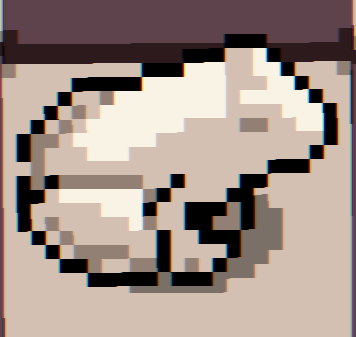 the fffrogggule
the fffrogggule
i want to start by breaking down the deceptive simpleness of chess piece movement, and what it takes to both program chess and explain the rules of chess to someone who hasn't played.
chess pieces occupy squares. in checkmage, squares are called tiles, and have more unique properties than regular chessboard squares.
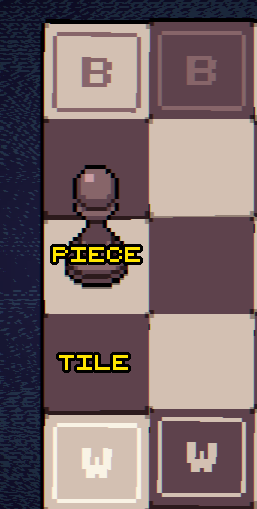
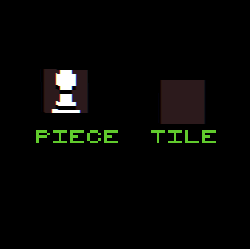
each chess piece has a unique set of moves that are all dependent on the state of the tiles on the board.
the pawn piece is a piece that can move to the tile directly in front of itself, as long as the tile is empty, or "unoccupied".
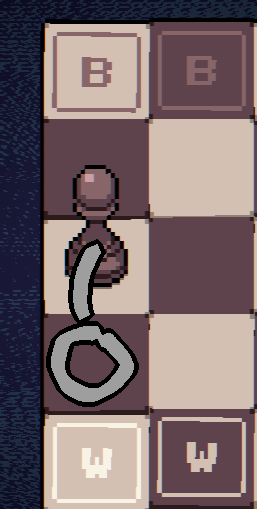

i decided to make the symbol to represent this a grey circle, using a neutral color and a shape that is inoffensive, with an empty center to show that the destination has to be unoccupied.
the second type of move a pawn can make is to the two tiles diagonally in front of itself, as long as the destination tile is occupied (by an opponent's chess piece). this also destroys the piece, which is called "capturing".
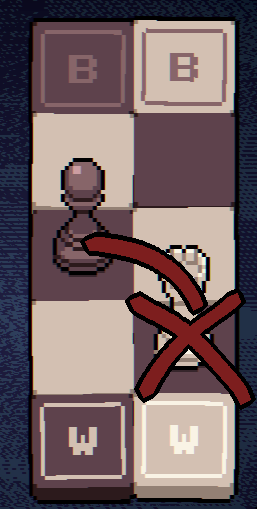
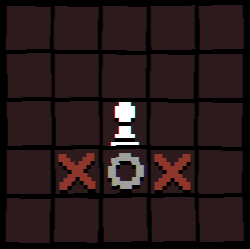
the symbol to denote this is a dark red X, showing the destination must not be empty, and using a color and shape that conveys aggression. it could also be confusing, because X's are typically used to convey that something is incorrect or invalid, but a blank space is used to convey impossible moves instead (to reduce visual clutter).
the third type of move is the move type used by rooks, bishops, knights, kings and queens. its just the combination of a move and a capture. some of these pieces can move or capture on any tile in a line in a single direction.
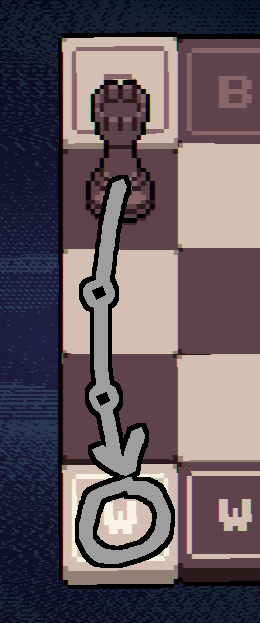
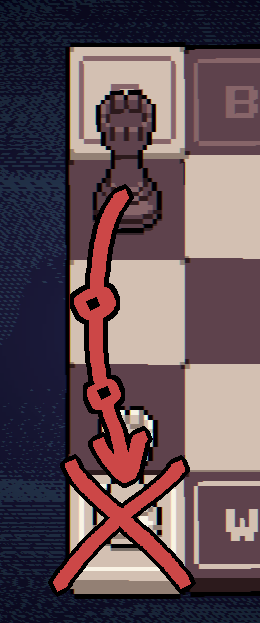

the symbol for this is a combination between a circle and an X, simplified to a filled in circle that has a color between grey and red (low saturation pink). the simplification is done because this is the most common type of move.
the arrow represents the idea that this type of move continues in one direction. On an infinitely large chess board, this could include an infinite number of moves. fortunately both in chess and Checkmage!, its ridiculousness is nerfed by the finite size of the board.
the final and most difficult to convey type of move is a leap. this is what pieces in checkers do: a conditional capture where the destination tile is not the same as the tile of the captured piece. this means that technically, every capture is just one of these leaps where the destination happens to be the tile with the captured piece.
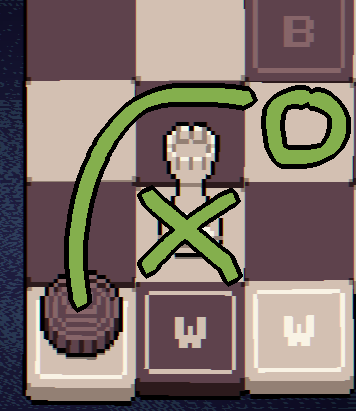
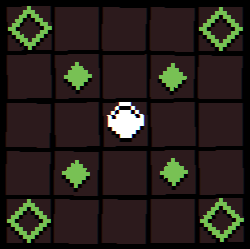
the symbols i used are reminiscent of the other symbols, with shapes that lock together. & its green because frogs r green and frogs JUMP
one of the potential problems: how can you know which symbols go with which?
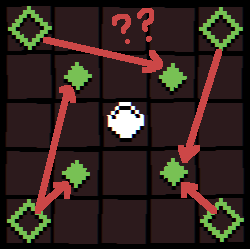
its unrealistic, but may become a real problem if i decided to add more complex move types
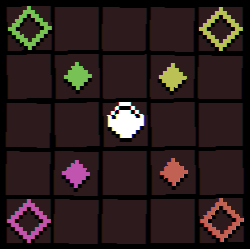
color coordination may work, but reduces visual clarity by introducing colors that aren't tied to ideas
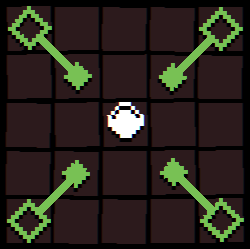
connected lines break the visual aesthetic of the miniature view
i havent resolved the symbol problem yet. however i dont intend to use unintuitive leap moves, and leapers will be relatively uncommon & encountered at a point in the game where players will be familiar enough to engage with more complicated systems.
finally, the actual miniature view of the Checker piece and the new Frog piece. these are still subject to change
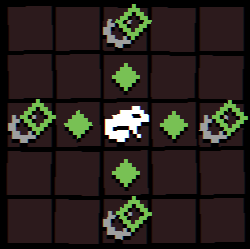

comparing the frog and the checker piece, which of these two would be stronger?
Checkmage! is still in active development. If you want to support me, please consider sharing with friends. The game will be released on Steam and Itch for sale when I'm done making it.
Checkmage! on steam - wishlist now!
Bluesky - more updates, videos and sneak peeks
Get Checkmage!
Checkmage!
casual chess rpg deckbuilder
| Status | In development |
| Author | posshydra |
| Genre | Puzzle, Role Playing, Strategy |
| Tags | 2D, Characters, Godot, Indie, Pixel Art, Retro, Singleplayer, Top-Down |
More posts
- Checkmage! weekly devlog 145 days ago
- Checkmage! weekly devlog 1316 days ago
- Checkmage! weekly devlog 1224 days ago
- Checkmage! weekly devlog 1144 days ago
- Checkmage! weekly devlog 1051 days ago
- Checkmage! weekly devlog 958 days ago
- Checkmage! weekly devlog 865 days ago
- Checkmage! weekly devlog 773 days ago
- Checkmage! weekly devlog 680 days ago
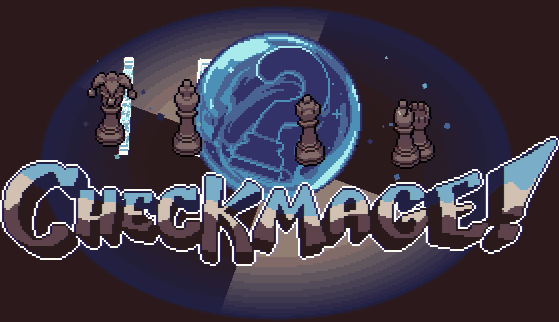
Leave a comment
Log in with itch.io to leave a comment.